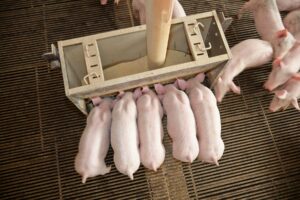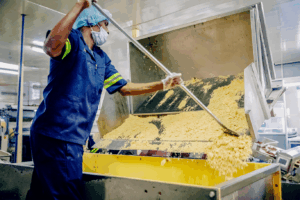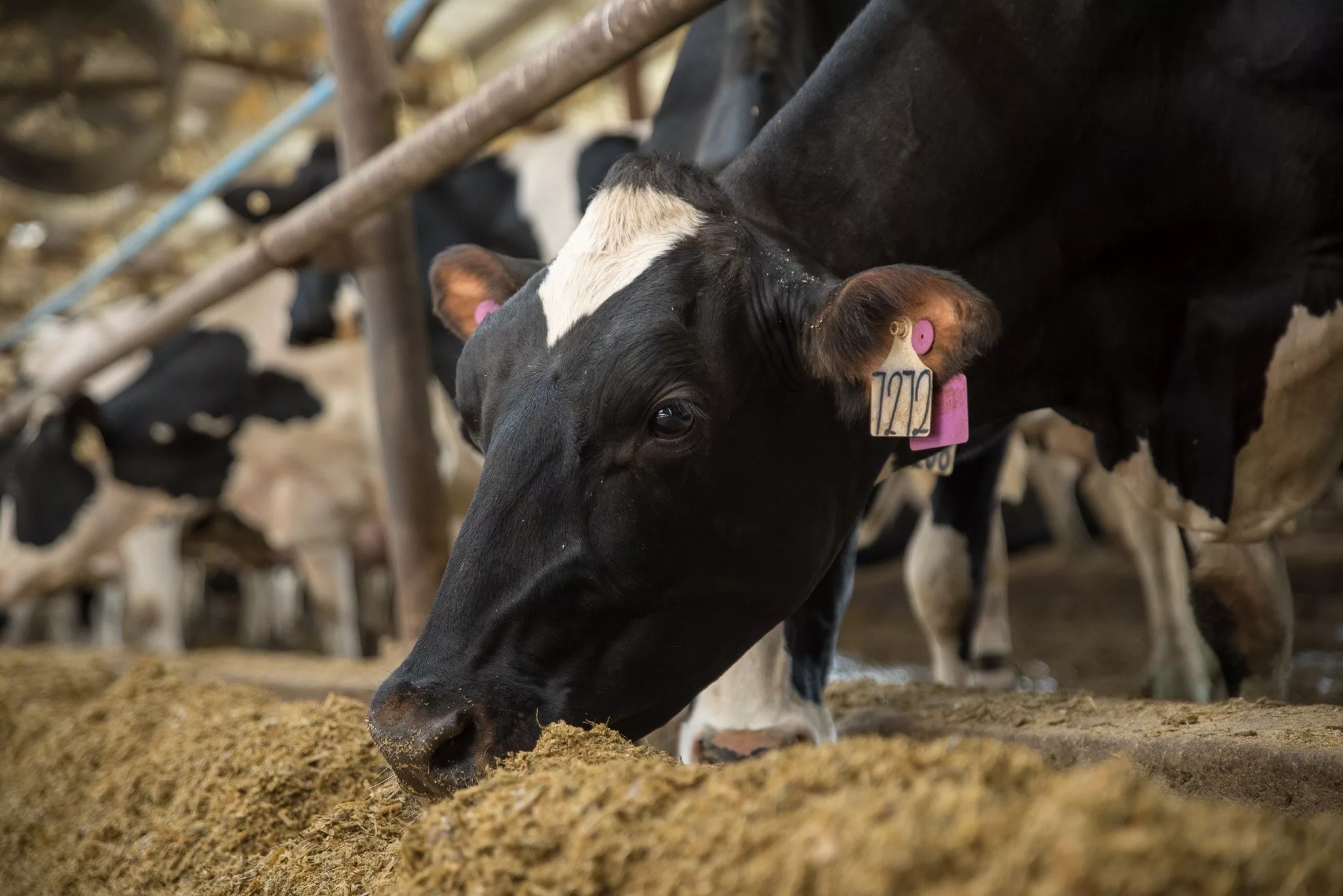I don’t know about you, but I grew up in a household where very little food was wasted. We were told to clean our plates and Mom would keep even the smallest amounts of leftovers to throw together the next day’s meal. Considering today that one-third of all food produced globally is lost or wasted, Mom had the right philosophy and it’s one being played out on a much grander scale at Green Field Solutions (GFS). I recently spoke with Jennifer Luchte, sustainability director at GFS, who has devoted much of her career to sustainability and is proud to put her passion to work for an innovative company finding a higher purpose for food waste.
_ _ _ _ _ _ _ _ _ _ _ _ _ _ _ _ _ _
What is Green Field Solutions and what does the company do?
GFS works with the world’s largest food companies to innovate and solve food waste problems, turning food manufacturing by-products into nutrient-rich animal feed ingredients. We work with some of the country’s largest Consumer Packaged Goods (CPG) companies to upcycle excess food materials that result from the production of cheese, milk, bakery goods and other products, giving them a higher purpose as nutrient-rich animal feed and pet food ingredients. Our passion is making better use of precious resources that otherwise would go to waste.
Can you give us an example of what that looks like? 
Certainly. One of the coolest sustainability stories comes from Cleburne, Texas. We work with a large dairy company there, and working with our sister company International Ingredient Corporation, we take near-expired dairy products from grocery stores – milk, cream, yogurt that otherwise would be thrown away. It’s turned into a powder used to make nutritious formula to feed young pigs and dairy calves. Through this project alone, we’re keeping millions of pounds of material out of the landfill and helping keep pigs and calves around the world healthy.
Why is the work of Green Field Solutions Important?
In 2019, more than 35 percent of all food in the United States went unsold or uneaten. That’s $408 billion worth of food – roughly 2 percent of U.S. GDP – with a greenhouse gas footprint equivalent to four percent of total U.S. GHG emissions (ReFED). Every year, more than 100 million tons of this excess food is upcycled to feed livestock in the U.S. (IFEEDER 2019 Animal Consumption Report). In 2021, the GFS team repurposed approximately 1.1 billion pounds of food manufacturing residuals.
Sustainable food manufacturing goes beyond keeping food out of the landfill to optimizing resources for their best possible use at their greatest possible value. Through advanced research and development, a wide range of food by-products that otherwise would have little to no value can be transformed into feed that promotes healthy animals. It truly is a circular economy, keeping the by-products in the food supply chain and helping to provide sustainable nutrition to people all over the world.
 Tell me about your specific role and why you do what you do? What drives you?
Tell me about your specific role and why you do what you do? What drives you?
As the Sustainability Director at Green Field Solutions, my role is to lead the development of the company’s sustainability goals, but also to help our clients meet their goals. For me, it’s all about feeding people. We need to reduce food waste, while feeding a growing population. Making better use of our excess food resources is why I love what I do. I remember my mom buying the cheese ends at the deli. Now, we make cheese scraps into nutritious ingredients. It’s just how I was raised, and I feel lucky to be able to work somewhere that aligns with my convictions.
What is the process for upcycling these materials into animal feed?
When we find a company interested in partnering with us, we begin with a full audit of a company’s facilities, understanding how and where waste streams are created. We take samples of all by-products and do extensive analysis to understand the nutritional content and characterization of the materials. We also use our years of experience and expertise to find the best possible end use for the materials – that means the best nutrition for animals and the most sustainable solutions. Our scientists, food technologists and feed experts have a deep knowledge of both food and feed ingredients.
Many governments and companies are setting targets and making commitments regarding environmental impacts. How can animal feed play a role?
You might be surprised to know that excess food makes up about half of feed ingredients. These by-products help optimize animal diets and reduce waste. The feed industry is working hard to be part of the solution. (Governments are starting to limit how much organic material can go to landfill, if not banning it completely. Companies will have to find new ways to dispose of excess food materials.)
Also, companies looking to comply with reduced waste and carbon emissions can meet their sustainability goals by repurposing food waste into animal feed. The World Resources Institute Food Loss and Waste Protocol, ReFED and the EPA allow companies to cut waste and emissions from their “sustainability bottom lines” by upcycling food waste into animal feed. I’m proud that Green Field Solutions has the capabilities to help companies reach important sustainability goals.
 Can you provide specific examples of solutions you’re working on that can advance to support sustainable animal protein?
Can you provide specific examples of solutions you’re working on that can advance to support sustainable animal protein?
Our goal is to move the needle on finding solutions for food waste. Ninety-five percent of what goes into precisely formulated animal feed is repurposed food material. Green Field Solutions is making a difference in animal feed, using what we already have to improve nutrition, while reducing the footprint of animal feed.
Are there any breakthroughs, unique ideas or new technology that will help direct more excess food resources to animal feed?
By enhancing unique nutritional characteristics and keeping an eye out for new and innovative markets and opportunities, our team of animal nutritionists and market experts are responsible for many food industry innovations. Our bold new projects and game-changers in upcycling, include a full range of products, such as: cheese, dairy, chocolate, candy, bakery meal, brewer’s yeast, plant proteins, oil and meats.
Thinking about the work you do and knowing consumers have many questions about where food comes from, how it’s raised and who’s producing it, what’s one thing you want them to know?
I wish all consumers could visit a farm with me to understand the complexity of feeding animals more sustainably. The reality is our planet needs to sustainably feed 9.2 billion people. Most of these people live in environmentally and economically at-risk parts of the world. We can’t increase food production with our current agricultural footprint. We need to use our precious resources wisely and more efficiently. Upcycling excess food products just makes sense.
Have questions? I’d love to connect with you! Reach out at @AskDrDorman or by email at AskDrDorman@pahc.com.
